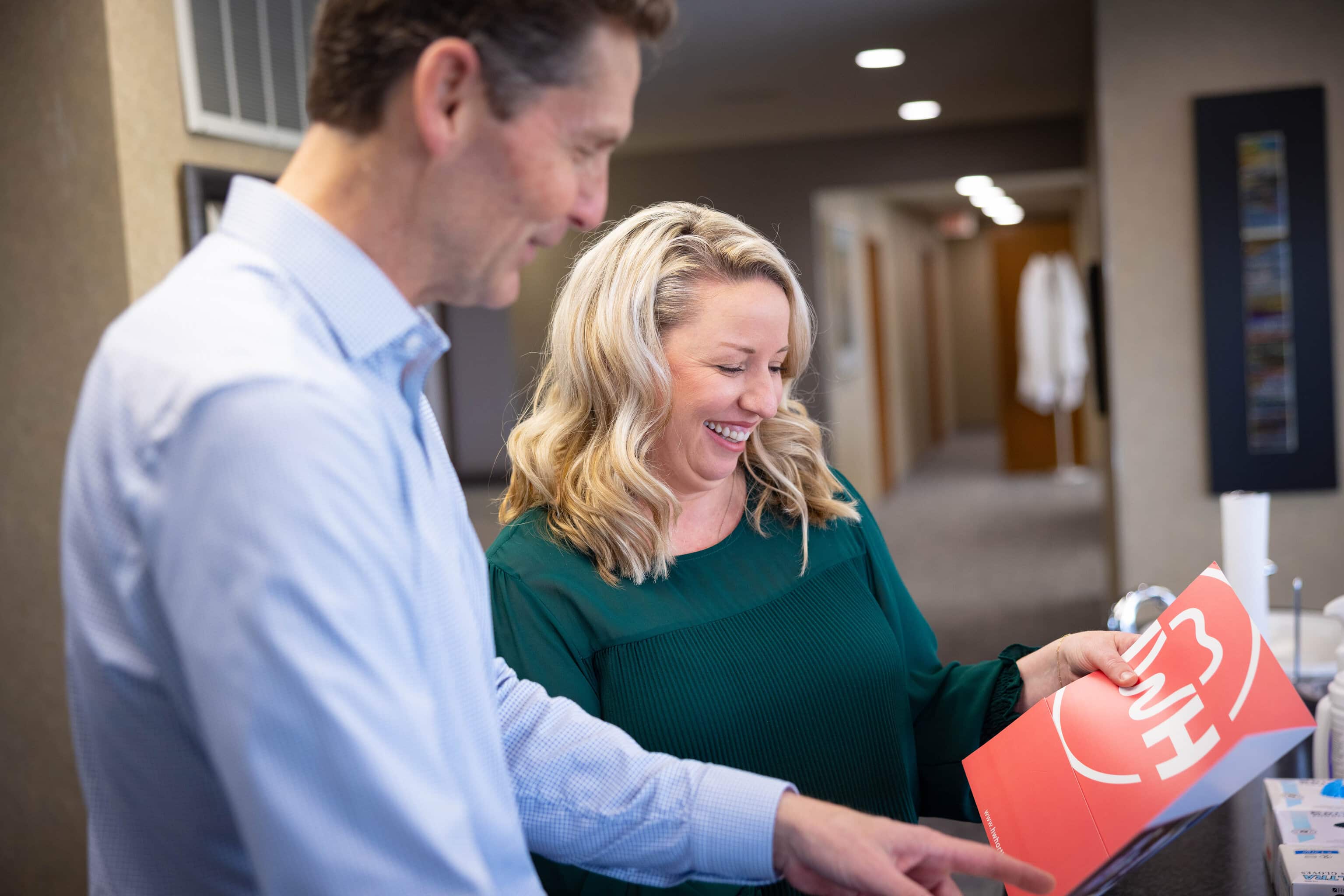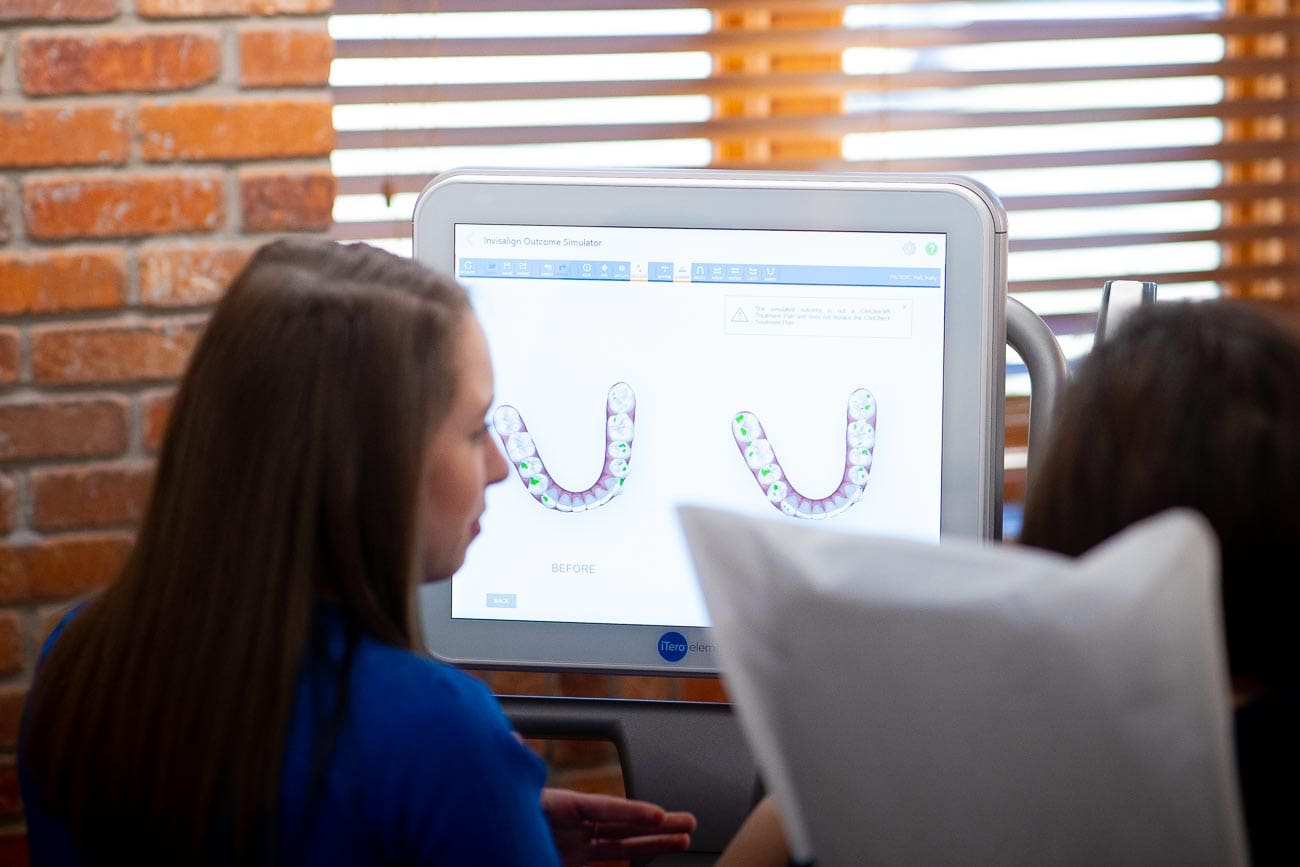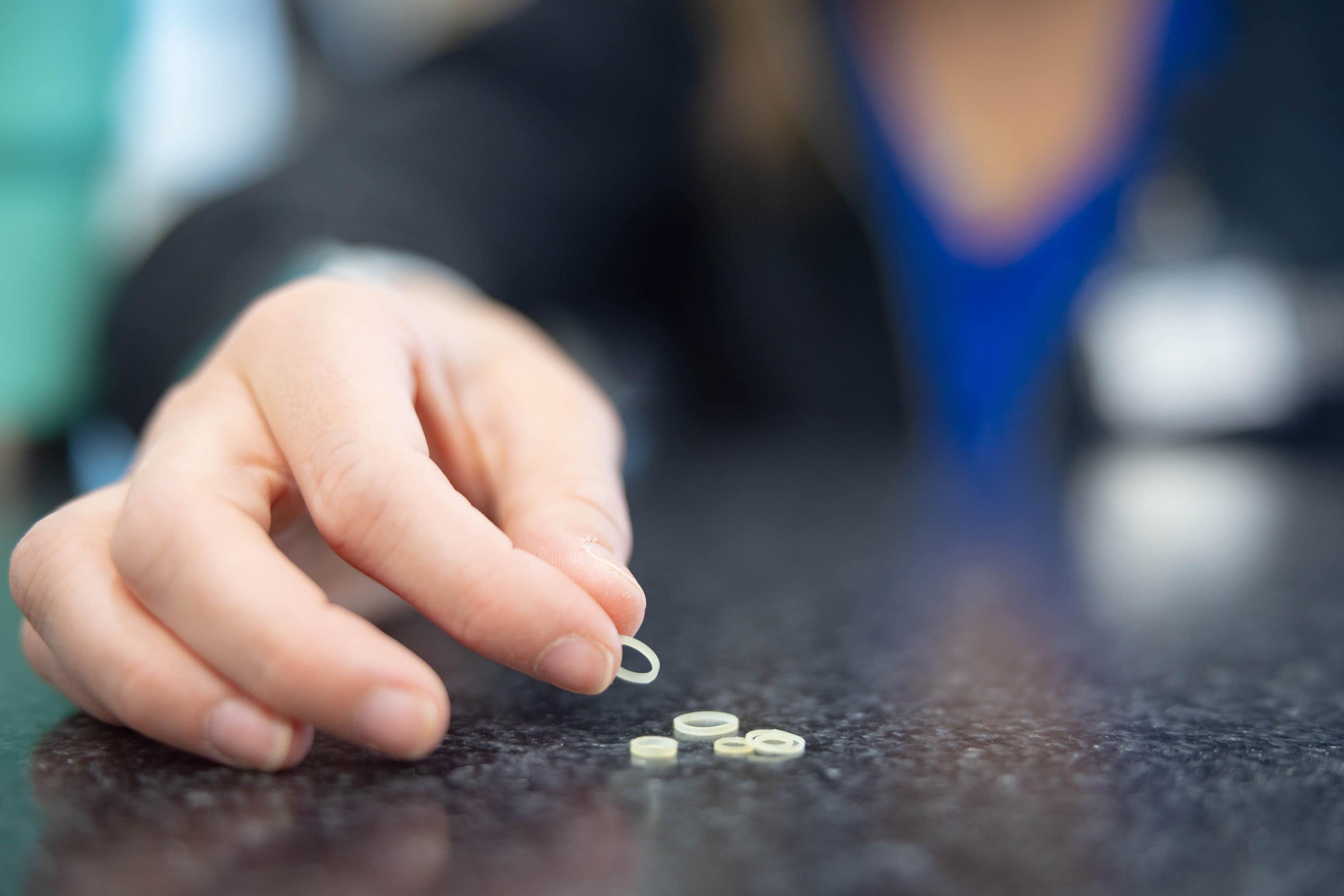Are you ready for straight teeth, a corrected bite, and a beautiful smile? Braces may be the way to go. Sometimes, though, braces alone can’t fix your bite. They need a little help from braces rubber bands.
Wilson & Hendrickson Orthodontics uses braces and rubber bands to help realign teeth and jaws. The results mean less jaw pain and popping, fewer headaches, better chewing ability, and a properly aligned jaw.
What Are Rubber Bands for Braces?
Rubber bands for braces are different from the orthodontic elastic bands that go around braces brackets on your metal braces or clear braces to hold the archwire in place. Braces rubber bands, also (confusingly) sometimes called braces elastics, stretch from one jaw to another and are used to realign your jaws.
These orthodontic rubber bands are made from a nontoxic material that can move your teeth and jaws a certain way to realign them or close gaps in teeth. There are several types of rubber bands, and each one has a different function.
What Do Rubber Bands Do for Braces?
If you’re wondering what rubber bands do for braces, they provide pressure and pull to realign your bite while the braces move your teeth.
A proper bite means your upper molars rest on and slightly outside your lower molars. This allows them to grind your food without simultaneously grinding down the enamel on your molars.
Proper alignment also means the line between your upper central incisors and your lower central incisors line up. Braces can sometimes realign your teeth on their own, but rubber bands will do the trick for those with severe misalignment.
 Types of Rubber Bands for Braces
Types of Rubber Bands for Braces
There are three types, or classes, of rubber bands for braces. Each type has a specific function. It’s important to wear each type correctly according to how we prescribe them to you. Never double your rubber bands to speed up your treatment because it can do more harm than good.
The three classes of rubber bands are.
- Class 1 Elastics: Class 1 rubber bands connect the upper first or second molar to the upper canine to close gaps between teeth.
- Class 2 Elastics: Class 2 rubber bands connect the upper jaw back to the lower jaw. They are used to pull the upper teeth back and the lower jaw forward to repair overbites.
- Class 3 Elastics: Class 3 rubber bands connect the lower teeth to the upper teeth to repair underbites by moving the bottom teeth back while pulling the upper teeth forward.
Depending on the severity of your dental issues, you may only need one class of rubber bands, two classes, or all three.
We will determine the class you need and show you how to properly place rubber bands on brackets. Make sure you place the proper class of rubber band on your braces brackets and place them the right way. If you ever have questions about your braces rubber bands, call us, and we can talk you through it.
Do Braces Rubber Bands Hurt?
Do orthodontic rubber bands hurt? Sometimes, the elastic rubber for braces that holds the archwire to your brackets gets switched out for new ones, and it can make your mouth sore for a few days. So, do rubber bands do the same?
You might get sore for a few days after wearing rubber bands, but they should be fine afterward. If it gets too uncomfortable, rinse your mouth with warm salt water a few times daily or take an over-the-counter pain reliever as directed.
 What If I Swallow a Rubber Band?
What If I Swallow a Rubber Band?
What happens if you have a braces emergency and accidentally swallow a rubber band? Orthodontic elastic bands of all types are made from non-toxic materials, so you should be OK if you accidentally swallow a braces rubber band. It should pass through your system within 24 hours.
You should let us know if you have any kind of latex allergy. While most orthodontic elastics are made of latex, latex-free options are available. We can ensure you get those instead.
5 Common Questions About Braces Rubber Bands
Our patients have several questions about rubber bands. We’re happy to answer any questions you may have. Here are a few of the more common questions we get about wearing rubber bands on braces.
- How long should I wear rubber bands? We will prescribe a set time, usually at least 22 hours a day.
- How do I know how to put my rubber bands on the brackets of my braces? When you first get your rubber bands from us, we will show you how to place them. We’ll let you practice several times to ensure you have it down.
- Do I wear my rubber bands while I’m eating? You need to remove your rubber bands before eating. Make sure you take a package of them with you when you go out so that you can replace them after a meal.
- What if I run out? Contact Wilson & Hendrickson Orthodontics when you realize your supply is getting low so we can get new ones for you. Don’t wait until you run out! Going without your elastic bands could slow your treatment progress.
- Can I buy different brands of rubber bands? We recommend you use the bands we give you. Our bands are specifically made for orthodontics and are non-toxic, but we cannot guarantee that with other brands or from other suppliers.
Braces Treatment in Topeka, KS
Braces rubber bands are just as crucial to your treatment as brackets and archwires. They help realign your bite so you don’t wear your teeth down. A proper bite relieves stress on your jaws, which prevents headaches and jaw pain, improves digestion, and makes proper speech easier.
Are you ready for a beautiful new smile? Schedule an appointment with Wilson & Hendrickson Orthodontics. Let us show you how amazing your smile can be!
Taking the First Steps
The first step to a better smile is to schedule a free consultation with Wilson & Hendrickson Orthodontics. We’ll be able to provide more information on the best treatment for your individual case and answer any questions you have!









